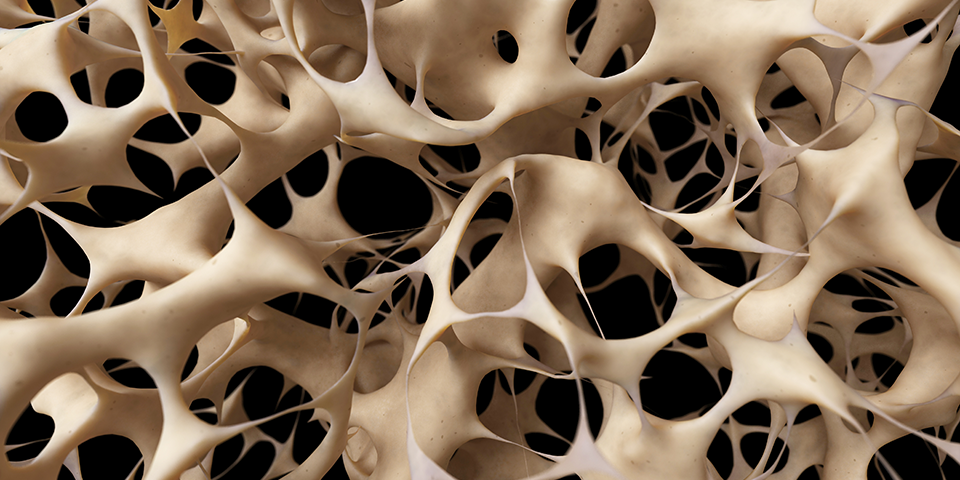One of the most important systems in the human body is the skeletal system. It protects important organs and gives the body a shape, making it indispensible. Our bones are designed to support us for an entire lifetime. But today, osteoporosis is on the rise, affecting the young and old alike, age not discriminating, and shortening the life span of our bones.
With any popular medical condition, abundant information breeds abundant myths. Needless to say, myths associated with osteoporosis are also in abundance. The only way to treat or prevent this condition is by debunking these myths, looking at the disease holistically and not in isolation and making amendments to improve bone health.
The Modern Day Definition Of Osteoporosis
Traditionally, osteoporosis has always been linked to a decline in bone mass. But is a decreased bone mass the only indicator of the disease? Maybe not! Research proves that more than 50% of people diagnosed with ‘osteoporotic bone’ never fracture. Statistics have shown that people with less intake of calcium in their diets don’t necessarily develop osteoporosis. This brings us to understand the most applicable definition of osteoporosis in the modern day. Osteoporosis may be defined as a skeletal disorder characterised by decreased bone strength and quality, predisposing a person to an increased risk of fracture. Architectural deterioration and poor self-repair mechanisms make bones very fragile and prone to osteoporosis.
Myths And Facts
Myth 1: Osteoporosis Is An Aging Woman’s Disease
Fact: It is true that bone loss accelerates with menopause, but osteoporosis takes years to develop and often begins at a young age. Bones begin building their density from infancy through early adulthood. Lifestyle preferences like lack of exercise, increased caffeine intake, lack of nourishment and chronic stress impair achieving maximum bone density. Diminished bone density males an individual prone to the disease. It is never too late to implement healthy lifestyle choices to prolong life of bones.
Myth 2: Consumption Of Dairy Products Prevents Osteoporosis
Fact: Calcium is undoubtedly required for bone strengthening. However, effective absorption of calcium depends on intake of bone building nutrients and other factors such as digestive health; rate of consumption of calcium depleting substances such as excess protein, salt, fat, sugar; use of drugs; stress etc. Therefore just adequate calcium intake without presence of other nutrients is not enough to prevent osteoporosis.
Myth 3: Low Bone Density Causes Osteoporosis
Fact: This isn’t always true. In persons undergoing fluoride treatment, the bone matrix often appears dense due to fluoride deposits, but this is hardly ever as strong as a calcium matrix. Medicine today recognises the absence of ‘self-repair’ mechanisms as the strongest indicator of osteoporosis. Bones are constantly undergoing breakdown and repair. Therefore presence of a self-repair mechanism is indispensible for a healthy bone and keeps bone disorders at bay. It is proven today that a woman with low bone density but strong self-repair capacity is not prone to osteoporosis, as one with strong bone density and poor self-repair capacity.
Myth 4: Oestrogen Supplementation Reduces Osteoporosis
Fact: Oestrogen increases calcium absorption in the gut and inhibits loss of calcium from bones. Therefore, women resort to oestrogen replacement to make up for its deficit during menopause and maintain healthy bones. But research has proven that oestrogen replacement only decreases bone loss but does not increase bone density. Moreover, oestrogen replacement increases a woman’s risk of breast and uterine cancer. One needs to understand that our body makes hormones strictly on a need basis. Laying more emphasis on other factors that promote calcium absorption post menopause will also help maintaining bone health.
Myth 5: Osteoporosis Is Hereditary
Fact: While family history does put an individual at a higher risk, not having a history doesn’t make you immune to it. Adopting healthy lifestyle practices at an early age like nutritious diet and exercise is a sure fire way to reduce the risk of developing osteoporosis.
For women, many factors like being post menopausal, never being pregnant to a full term, premature menopause, amenorrhea, lack of muscle mass when compared to men, makes them more susceptible to osteoporosis. This is perhaps one of the reasons why it is labelled as a ‘woman’s disease’. Whatever the reasons, taking early steps to prevent, halt or reverse osteoporosis by clearing up facts is beneficial.
